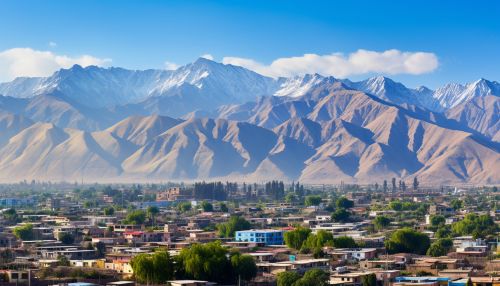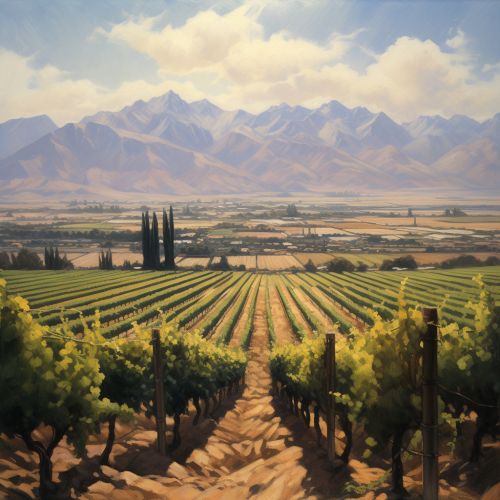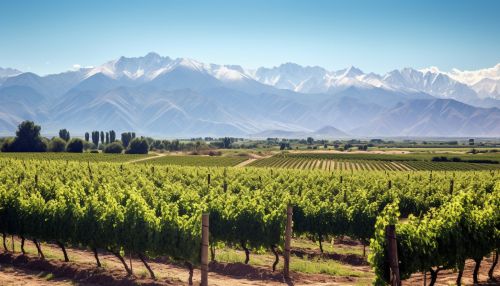Mendoza
Geography
Mendoza is a city in western Argentina, located in the northern-central part of the province of Mendoza. It is situated in the foothills of the Andes mountains, which forms a natural border with the neighboring country of Chile. The city is approximately 1,050 kilometers west of Buenos Aires and 380 kilometers northwest of Santiago, Chile.


The city is built in a region of the Andes known as the Precordillera, a series of mountain ranges that run parallel to the main Andean chain. The Precordillera is characterized by its high peaks, deep valleys, and the presence of numerous rivers and streams, many of which are fed by the melting snows of the Andes.
Mendoza's climate is classified as a semi-arid climate, with hot summers and cool winters. The city receives an average annual rainfall of about 200 millimeters, most of which falls during the summer months. Despite the arid conditions, the presence of the Mendoza and Tunuyán rivers allows for the irrigation of a wide area around the city, making it a fertile region for agriculture.
History
The area that is now Mendoza was originally inhabited by the Huarpe people, an indigenous group that lived in the region for thousands of years before the arrival of the Spanish. The Huarpes were known for their advanced irrigation systems, which they used to cultivate maize, squash, and beans.
The city of Mendoza was founded on March 2, 1561, by Spanish conquistador Pedro del Castillo. The city was named after García Hurtado de Mendoza, the then governor of Chile, who had successfully quelled an indigenous uprising in the region.
In the 19th century, Mendoza played a key role in the Argentine War of Independence. It was in this city that General José de San Martín organized the Army of the Andes, which crossed the mountains to liberate Chile and Peru from Spanish rule.
Economy
Mendoza's economy is diverse and robust, with significant contributions from various sectors. The city is most famous for its wine production, and is considered the heart of the Argentine wine industry. The region's high altitude, sunny climate, and irrigation from Andean meltwater create ideal conditions for growing grapes, particularly Malbec, a variety that has become synonymous with Argentine wine.


In addition to wine, Mendoza's agricultural sector also produces olives, fruits, and vegetables. The city is also a center for beekeeping and honey production.
The city's industrial sector is diverse, with industries ranging from food processing and textiles to metalworking and petrochemicals. Mendoza is also a major center for energy production, with numerous hydroelectric plants located in the province.
Tourism is another important sector of Mendoza's economy. The city's beautiful scenery, outdoor recreational opportunities, and world-class wineries attract visitors from around the world. Mendoza is also a popular destination for adventure tourism, with opportunities for hiking, mountaineering, and rafting in the nearby Andes.
Culture
Mendoza's culture is a blend of indigenous, Spanish, and immigrant influences. The city is known for its vibrant arts scene, with numerous museums, galleries, and theaters. The city is also home to the National University of Cuyo, one of Argentina's most prestigious universities, which contributes to the city's vibrant intellectual and cultural life.
The city's culinary scene is heavily influenced by its wine industry. Many of Mendoza's restaurants offer extensive wine lists featuring local vintages, and traditional Argentine asado (barbecue) is often paired with Malbec wines.
Mendoza is also known for its festivals. The most famous of these is the Vendimia festival, a celebration of the grape harvest that takes place in March. The festival includes parades, concerts, and a beauty pageant, culminating in a large public wine tasting.
